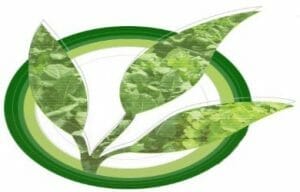
Pharmacology deals with all aspects of the actions of drugs on living tissues, particularly their effects on man. The word Pharmacology comes from Greek: pharmakon meaning drug, and logos, “knowledge”.
Homoeopathic pharmacy
May be defined as the art and science of collecting, identifying, preparing, preserving, evaluating, standardizing and dispensing of medicines.
It also embraces the legal and professional aspects and regulation of proper distribution of medicines.
Why to study this relation?
- To enhance the knowledge in the subject.
bout the source of the medicine.
Actions of the medicine in the humans.
To avoid the wrong prescriptions.
To know the indigenous drugs and its use
The knowledge of pharmacy improves the knowledge of materia medica upto certain limits as follows
- Knowledge of drug proving
- Knowledge of mode of collection of drug substance , their preservation & preparation
- Knowledge of drug sources & doctrine of signature
- Knowledge of prescription & proper dose
- Knowledge of preparation & potentisation of medicines
- Knowledge of general action of certain group of drugs
1) Knowledge of drug proving– homoeopathic materia medica is well understood only by drug proving on healthy humans. All observations, signs & symptoms during drug proving should be collected & that gives the correct knowledge of that drug. Information about the effects of drugs in general , idiosyncracies, & suscsptibility of a person improves the knowledge of materia medica
2) Knowledge of mode of collection of drug substance , their preservation & preparation–
3) Knowledge of drug sources & doctrine of signature
Apart from the plant, animal and chemical kingdoms, introduction of nosodes, sarcodes, imponderabilia is a specific aspect of homoeopathic pharmacy.
It also employs synthetically prepared compounds as a source of medicine, but only in dynamized state.
Synthetic source or tautology–Compounds synthesized, that have found a place in allopathic system of medicine, are potentized, proved on healthy provers and administered on the basis of the principle of Similia. This category of drugs is termed as ‘synthetic’.
Phytochemistry – active principles of plant drugs
Phytochemistry is the chemistry of plants or chemical constituents of plants. It is the chemistry of natural plants used as drugs.The active principles of a drug are the potent constituents of the drug that is individual to the drug and are responsible for the pharmacodynamic action of the drug.Homoeopathy accepts a drug with its entity and totality without attempting to separate a drug into its specific chemical constituents.
By the knowledge of source of medicine we can understand whether a drug is short acting or deep acting . for eg
Drugs of vegetable kingdom are short acting and useful in acute diseases.
Drugs from mineral, animal kingdom and nosodes are deep acting and useful in chronic diseases
Drugs belonging to the same family may be related to each other.
- Arum triphyllum and Caladium belong to the same family Araceae and are inimical to each other.
- Nux vomica and Ignatia belong to family Loganiaceae and are inimical to each other.
- Belladonna and Dulcamara belong to Solanaceae and are inimical to each other.
- Ranunculus bulbosus and Staphysagria belong to Ranunculaceae and are inimical to each other.
- Aloe, Allium cepa, Allium sativum and Scilla belong to Liliaceae, but do not follow each other.
- Snake venoms belong to the same family and have similarity in action, but do not follow each other well.
- Halogens like Chlorine, Bromine, Iodine and Fluorine are similar to each other.
- Nosodes are harmful in low potencies, but act better in higher potencies.
- Metal drugs follow well vegetable drugs in treatment
Doctrine of Signature
was a belief that God had a placed a sign on healing substances, indicating their use against disease. The idea of’’the doctrine of signature’ is inferring the nature of actions of a substance from its physical appearance and properties, from their color and form.
Egs:
Belladonna
grows in a soil rich in calcium carbonate. Hence, Calcarea carb is complementary to Belladonna.
Tarantula hispanica
is a spider that comes out when drums are beaten. Tarantula patient is sensitive to music.
Digitalis
maybe of use in blood diseases, as its flowers are adorned to with blood colored dots.
Euphrasia
is a good remedy for eyes, as it had a black spot in corolla that looked like a pupil.
Hypericum
having red juice maybe of use in hemorrhages.
Rhus tox
plants are collected in damp weather, rainy season, in evening, as it possesses more medicinal properties. These are also its modalities.
Bryonia
is prepared from root, which is fleshy, yellowish white in color, rough with acidic and bitter taste.
Bryonia patient
is also fleshy, with yellowish white coated tongue, rough irritating temperament and possessing bitter taste in mouth.
4) Knowledge of prescription writing & proper dose– physician must have the knowledge of prescription writing & proper dose. If dose is high it may produce harmful effects on the body. Pharmacy teaches the principles of posology which helps to increase the knowledge of MM
5) Knowledge of preparation & potentisation of medicines- physician should know the different modes of potentisation, this complements the knowledge of materia medica
6) Knowledge of general action of certain group of drugs- eg; mineral acids like sulph acid , nitr ac etc produce corrosion & destruction of tissues causing coagulation necrosis by precipitation of proteins
- Metallic irritats-ars, mercury- acts on mucus membrane, liver, skin, blood etc.
- Non metallic irritant- phos- stomach, intestine, liver, spleen etc
- Sspinal irritants- nux, ign- incoherent muscular paralysis, on sensory nerves produces heperasthesia etc
- Ophidian- muscular paralysis due to neuro toxins. Destroys RBC, leucocytes etc due to haemotoxins
From the above facts it is obvious that knowledge of pharmacy helps to increase the knowledge of materia medica

Be the first to comment